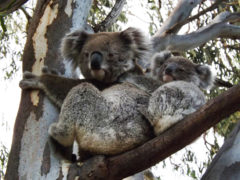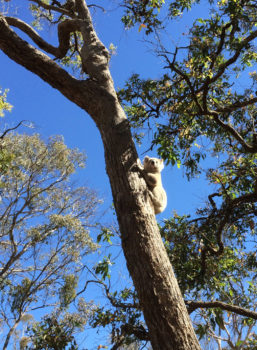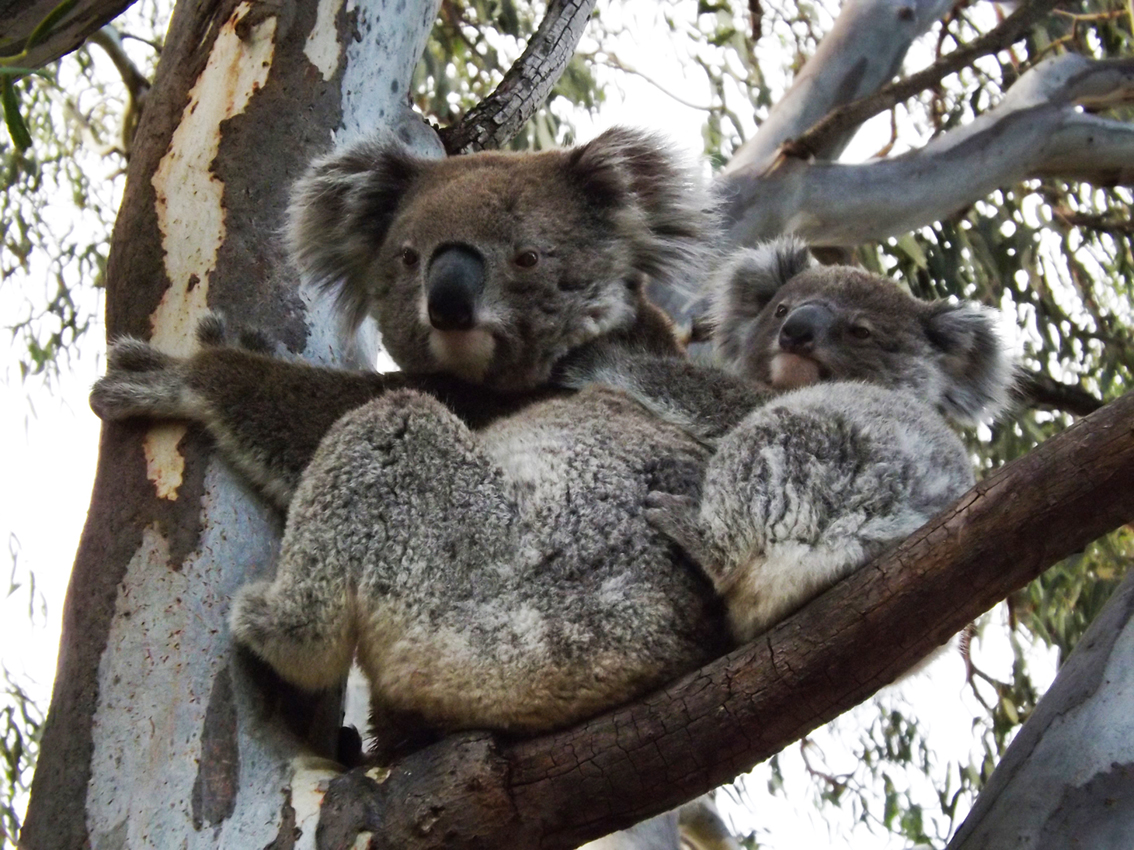 With a decrease of 90% in the koala population west of the divide, caring for koalas in the high country has become critical. On current trends, if no action is taken, the entire koala population of NSW may be extinct by 2050. Koalas are now listed as a vulnerable species in NSW
With a decrease of 90% in the koala population west of the divide, caring for koalas in the high country has become critical. On current trends, if no action is taken, the entire koala population of NSW may be extinct by 2050. Koalas are now listed as a vulnerable species in NSW
There was previously a large viable population on the Liverpool Plains, in Pilliga Forest, the Warrumbungle National Park, Leard forest and the treed farmlands. Climate change is now taking inland temperatures too high to sustain koala populations, and so the inland population has been decimated. Added to this, recent wildfires in Pilliga forest and the Warrumbungles have killed hundreds of koalas, as well as destroying their habitat.
 The cooler tablelands are now significant to the survival of koalas. There are known populations living in the area. There are regular sightings on UNE grounds, on the edge of Armidale to the north, including Snow Gums Reserve at the Lookout, Rockvale Road, the Archery Reserve, Arundel Drive, Edgar Lane, Stoney Ridge Rd through to Tilbuster, Mt Duval and The Pinch, to the south and east near the cemetery, to name a few locations of recent sightings.
The cooler tablelands are now significant to the survival of koalas. There are known populations living in the area. There are regular sightings on UNE grounds, on the edge of Armidale to the north, including Snow Gums Reserve at the Lookout, Rockvale Road, the Archery Reserve, Arundel Drive, Edgar Lane, Stoney Ridge Rd through to Tilbuster, Mt Duval and The Pinch, to the south and east near the cemetery, to name a few locations of recent sightings.
It is known that koalas move to find food and mates and Armidale is a significant koala corridor.
Previously Gunnedah called itself the koala capital of Australia, but there is a great decline in koala numbers due heat waves and drought. As well as conserving the koala population this is a prime opportunity for Armidale to cash in on tourism, having one of the healthiest remaining koala populations in NSW.
Armidale Regional Council is being encouraged to preserve the remaining koala habitat. Residents are invited to register any koala sightings on the Council sighting register. These sightings are transferred to Council’s GIS system that helps to inform development decisions. The sightings are also sent to the Office of Environment and Heritage and logged onto the NSW Wildlife Atlas, Bionet.
Landholders can also plant koala feed and habitat trees, some local koala feed species are:
- Snow gum (Eucalyptus pauciflora)
- Mountain white gum (Eucalyptus dalrympleana)
- Yellow Box (Eucalyptus melliodora)
- Blakely’s red gum (Eucalyptus blakelyi)
- Ribbon gum (Eucalyptus viminalis)
- New England Stringybark (Eucalyptus caliginosa)
For further information and purchase of trees to encourage koalas contact Armidale Tree Group, 80 Mann St, Ph: {local landline prefix}1 1620,
The Habitat Action Group, Sustainable Living Armidale
